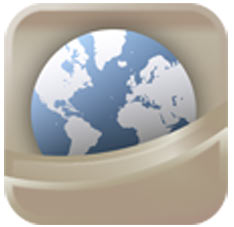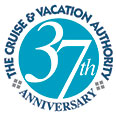50 Essential Experiences: A Lesson in Courage and Sacrifice - Normandy, France
by Bruce Krumrine
Princess Cruises, Vice President of Shore Operations
With both parents in the cruise industry our teenage kids know all too well the pleasures and occasional hardships (Dad, not another cathedral!) of the family vacation. As long-time Princess employees, my wife, Julie, and I have over the years set sail, our boys in tow, to some incredible destinations. And trying to be good parents, along the way weve visited our share of museums, monuments and historic sites; and learned about kings, queens, emperors, popes, and just about everyone else.
As much as we enjoyed the moment, we now look back on our cruises together as something even more special. Because traveling and learning to appreciate the world is also a great way to appreciate each other. And just like when viewing a great piece of art, you sometimes need to take a couple of steps backwards to garner the best perspective. I think the same can be said about vacations, and certainly this is true for our familys inspiring trip to visit the D-Day landing beaches on the Normandy coast.
It was the summer of 2006 and we were on a Golden Princess cruise visiting ports in Western Europe. Our sons were then 13 and 8 years old. Julies mom was with us as well. On this same cruise we had already visited some of Europes must-see cities including Dublin, Bergen, Edinburgh, and Bruges. When we pulled into Le Havre, we chose to begin our day with freshly baked croissants in the ships patisserie (where else, we were in France?) before going ashore to meet our tour guide.
Marie was smart and elegant and very organized, and she presented us with a detailed timetable for our D-Day tour that would have impressed even General Eisenhower. From Le Havre, we headed south along a sunny and warm Normandy coastline. Its easy to understand why its rugged beauty and quality of light made it a favorite with the Impressionist painters.
Our guide made good use of our two-hour drive to first brush us up on French and Norman history (trust me, we needed it) and then, of course, to talk about D-Day. She took the time to engage the boys and to explain to them why D-Day was significant.
She explained that the D-Day landing took place on June 6, 1944. That it was the largest amphibious invasion in history, and took years of top secret planning by the Allied command. That on this single day over 156,000 Allied troops crossed the English Channel and landed along a 50 mile stretch of Normandy coastline, including over 23,000 airborne troops and 133,000 waterborne troops.
She explained to them that the troops were mainly American, British and Canadian, and also included French and other nationalities. That over 11,000 aircraft were used to support the airborne troops and over 5,000 ships were used to move the waterborne troops and supplies.
Our sons heard that this was a mission to secure a foothold on the French coast, and that what the Allies faced was the German Atlantic Wall, an extensive system of coastal fortifications built by Nazi Germany and manned by the German 7th Army.
They learned that over 4,000 Allied troops lost their lives on the landing day, and that over 12,000 Allied troops would lose their lives during the entire D-Day campaign. That D-Day was one of the great turning points of World War II. And that eleven months later, Hitler was dead and the war was over.
With this important information imparted, we felt well prepared to appreciate the significance of the place we were about to visit.
We began our D-Day tour with a visit to the Peace Museum in the seaside town of Caen. Considered the best World War II museum in France, it not only provides an in-depth explanation of D-Day but places it within a broader context of the war and the twentieth century. We spent about an hour and a half there, although one could easily spend the day. The displays are kid friendly and our guide showed us the best of the museums vast collection, including the 30 minute film on D-Day that brought this epic endeavor to life.
Napoleon (also no stranger to trying to fight the British and the Russians at the same time) said, An army travels on its stomach and, taking his advice, we made our way to a nearby local restaurant for lunch. It was small and stylish, the perfect French seaside caf. In a matter of minutes a mountain of fresh steamed mussels, loaves of crusty French bread, and a bottle of crisp white wine arrived. It was simple and delicious.
After lunch it was time to visit the landing areas. We walked along a wide, wind-swept beach as our guide retold the story of the invasion. With our backs to the sea and the cliffs looming in front of us we could only begin to imagine the chilling and heroic realities of the invasion day soldiers arriving on rough seas in landing craft met by a hail of fire from the hill-top gun emplacements. At times during the battle the fighting was so severe and loss of life so high that Allied commanders considered calling off the attack.
And there was also time that afternoon for boys to be boys meeting up with other kids from all over the world, climbing in and out of thick concrete bunkers hidden in the cliffs, and clambering over and under restored tanks and other military vehicles that dot the beach area. It reminded me of the quote I had seen earlier in the day at the Peace Museum, From the heart of our land flows the blood of our youth, given to you in the name of freedom. Maybe there is no better expression and reward of the hard-won freedoms of the generations before ours than watching these kids at play.
Our last stop was the American Cemetery at Colleville, a 172 acre site, immaculately maintained, crowning a bluff above Omaha Beach. I remember as we entered the cemetery how quiet we became before us glowed 9,387 white marble crosses and Stars of David. There is no more vivid a reminder of the enormity of D-Day and the loss of life than here. I suppose all generations bring a different perspective to places but we all shared an overpowering sense of loss and remembrance.
We walked among this sea of headstones reading the names, home states, and dates of death inscribed on each. Many of them were only a few years older than our sons. Although strangers, as we read each grave we felt a personal and profound connection to the fallen soldier.
We visited the chapel, the giant reliefs of the Battle of Normandy and the Battle of Europe, and the Garden of the Missing with the names of 1,557 soldiers who were never found. From there we made our way to the bluff for a last look at the Normandy beaches.
As we stood high atop the cliffs overlooking the beaches, on such a tranquil day, it was then that I saw our boys recognize the true significance of what we had visited and that the courage and sacrifice of others had allowed them to enjoy a better life. Id like to think it was a moment when, by looking back at history, they gained a new perspective. I think we all did.

With each issue of Ultimate Experiences Online, you’ll enjoy a collection of articles, slideshows and videos that we will inspire you to make your travel dreams a reality.

To help you discover ways to explore the world, we're pleased to share our The Travel Magazine Online.
 Save money and escape the crowds. Hot Deals and multi-port packages. Savings of up to 50%!
Save money and escape the crowds. Hot Deals and multi-port packages. Savings of up to 50%!

Our free app that allows you to carry all of the destination information you need while traveling, right in your pocket!

We recommend optional travel insurance that protects you in the event of having to cancel your trip avoiding travel vendor cancellation policies and more!





